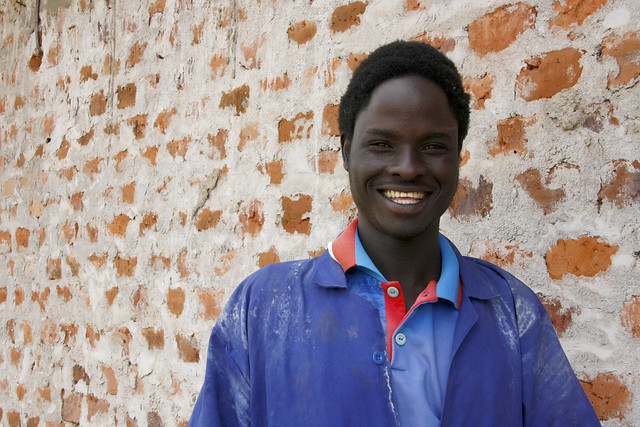At the 74th UN General Assembly meetings, Jeremy Konyndyk and I held a high-level side event at the Rockefeller Foundation headquarters focused on a vital but inadequately addressed aspect of the humanitarian system and humanitarian reform in particular: who has power, who lacks power, and how to change it.
The event highlighted our new paper on people-driven response—a series of proposals for expanding crisis-affected people’s role in humanitarian decision-making, and deepening the humanitarian system’s accountability to them. The paper identifies three imperatives for humanitarian actors: building explicit mechanisms to enable aid recipients to influence aid decision-making, establishing independent feedback and accountability channels, and addressing institutional barriers to greater accountability. These imperatives provide a conduit to move beyond technical issues to interrogate structural barriers to reform. The event explored broader issues of power in humanitarian action, including funding dynamics and program delivery relationships.
The event included Dr. Jemilah Mahmood of the International Federation of Red Cross and Red Crescent Societies (IFRC), Simon O’Connell of Mercy Corps, and Heba Aly of The New Humanitarian. The dialogue also benefited from audience participation. Some of the key conversation areas included:
-
Donors hold power to direct resources and impose conditions on funding. One topic participants discussed was how donors can build on to the success of cash programming. As Mahmood described, the growth of cash transfers has been transformative, providing a dignified way for recipients to prioritize spending based on their own needs. Catherine Bertini, Rockefeller Foundation Fellow and former head of the UN World Food Programme, questioned whether donors are proactive enough in using the collective power they hold. Nick Dyer, a director general at DfID, acknowledged there is significant frustration in the donor community over lagging progress on reform, but also some collective inertia and concern among that speaking too openly about problems may undermine public support for aid. He described DfID’s efforts to use performance-based funding to incentivize agencies, but noted that such efforts inevitably create “winners” and “losers,” and that other donors have yet to follow DfID’s lead.
-
While donor power represents a key lever to generate change, it favors the traditional humanitarian power structure, and often overwhelms local voices in the process. A Syrian NGO representative noted that after five years of crisis in Syria, local organizations remain burdened by the need to operate in English, the language of their funders, rather than working in Arabic. Audience members noted that not only small NGOs deal with this issue; major international agencies represent another dimension of this traditional power structure and similarly drown out the direct perspectives of local actors. Aly pointed out that international agencies are tasked with assessing needs, addressing those needs, and then assessing their own performance in doing so: a conflict of interest that can lead to blind spots in coverage. A representative from the NGO Med Global noted that this dynamic exists in Yemen, where international agencies tend to prioritize basic and acute healthcare needs over treatment for chronic diseases that also affect huge numbers of Yemenis.
-
While the “old guard” humanitarian agencies are sometimes criticized as slow to change, they are at times important advocates of donor reform. McQueen, from the UAE Ministry of Foreign Affairs and International Cooperation, explained that as Gulf donors have increased and professionalized their humanitarian giving, it is often the large mainstream UN agencies that have pushed them toward more effective donorship. Whereas Gulf states traditionally leaned toward providing traditional, in-kind aid, McQueen credits the large agencies with building Gulf state openness toward priorities such as cash programming and funding of the Central Emergency Response Fund (CERF).
-
Aly noted that mainstream humanitarian agencies are often wary of allowing the private sector into humanitarian operations, but must begin to accept that they may need to make room for new players. Naser Haghamed, CEO of Islamic Relief Worldwide, pushed back, cautioning that the corporate actors tend to have a lower risk tolerance than aid organizations; the international private sector may show up in a stable place like Jordan but not in a place like Yemen. Simon O’Connell added that de-risking by financial service providers in fragile settings is putting a squeeze on humanitarians.
Numerous comments also focused on the need to adjust to the reality that traditional players’ roles will inevitably evolve—and perhaps shrink—in the years ahead. As one commenter observed, every layer in the system tends to complain about the layer above itself. But realigning power and incentive structures within the system will take collective goodwill and an openness to rethink agencies’ own roles, rather than just pointing the finger up the chain at others. CGD will continue broadening the dialogue on these issues as the research project Rethinking Reform: Toward Demand-Driven Humanitarian Action continues.
CGD blog posts reflect the views of the authors, drawing on prior research and experience in their areas of expertise.
CGD is a nonpartisan, independent organization and does not take institutional positions.






